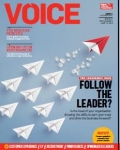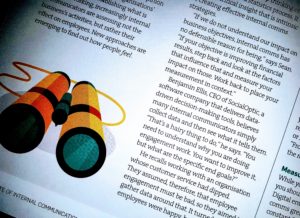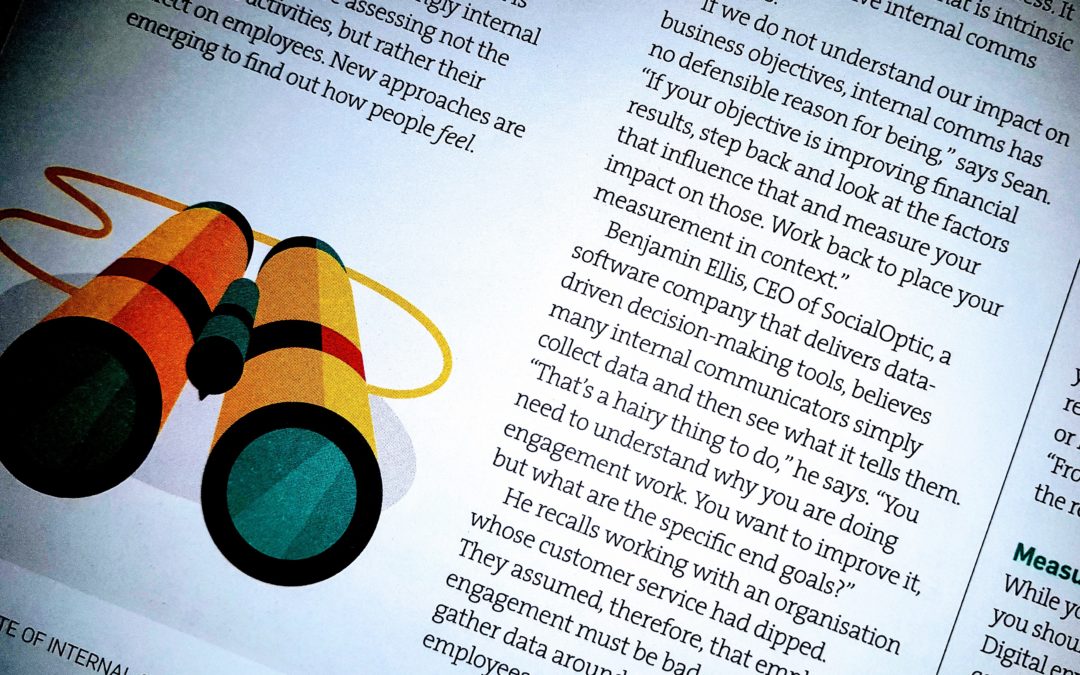 Get right to the bottom of measuring employee engagement. There are whole books devoted to it, but the basics are quick to grasp. The October edition of Voice Magazine, from the IoIC, has an extensive article titled “All in good measure” on the topic. It is a comprehensive read, including different view points from the likes of Rob Dumbleton, Drew McMillan, Sean Williams, David Norton, Sharon Kennedy, with commentary from myself from a SocialOptic perspective. Of course, there is always more to say, so I am sharing some additional thoughts here.
Get right to the bottom of measuring employee engagement. There are whole books devoted to it, but the basics are quick to grasp. The October edition of Voice Magazine, from the IoIC, has an extensive article titled “All in good measure” on the topic. It is a comprehensive read, including different view points from the likes of Rob Dumbleton, Drew McMillan, Sean Williams, David Norton, Sharon Kennedy, with commentary from myself from a SocialOptic perspective. Of course, there is always more to say, so I am sharing some additional thoughts here.
If you already understand the importance of employee engagement, the reasons for measurement should be intuitively obvious. If you don’t measure it, how do you know where best to invest resources to make improvements? If people are happy with their compensation, but unhappy about access to professional development, then giving people a healthy pay rise is a waste of money. If staff say that learning opportunities in the organisation are excellent, but they don’t understand the company strategy, then putting even more investment into an e-Learning platform is wasted – you need to invest more in communicating the vision, mission and strategy.
Measuring employee engagement, with the objective of understanding and improving it, is an essential activity for any business that wants to attract and retain staff, and remain healthy. The most appropriate method will depend on your company size, structure and operating model, but regardless, some form of measurement is needed to objectively guide the management team in the right direction.
 Begin with the end in mind
Begin with the end in mind
Like all good research, start with an objective or a hypothesis, drawn from your business strategy. Have a focus: What areas do you want to look at? What factors are most important to you at the current stage of the business? Recruitment? Retention? Staff development? Facilities? Leadership development? You will end up with additional findings, but having a focus to the measurement keeps the process effective, and leads to more actionable results.
Understand the Cycle
The traditional research cycle mixes quantitative approaches, like a well designed survey, with qualitative approaches, like focus groups, interviews and open ended questions. Effective measurement isn’t a one shot event, it is a cycle of collecting, exploring, digesting, communicating and testing your findings. There should be a consistent cadence to measurement, a rhythm that drives continual improvement and aligns with the organisation’s planning cycle and goals. Be careful: if you ask for monthly feedback, people will expect communication of monthly progress. Choose your cadences, and the levels of measurement, carefully. Most importantly, the cycle should include communicating results of the measurement, the resulting actions and how the team is following through on them back to staff. We often use the timeline in Milestone Planner to provide a closed loop process for tracking and communicating progress, choose a process and a tool that works for your organisation.
Always follow up, follow through and check back.
Ask Regularly, Listen Constantly
Feedback, communication and measurement are complementary, but they are different. In building “the voice of the employee” people often confuse listening and questioning. From on-line feedback solutions to ‘town hall’ Q&As and manager one-to-ones, you need open and effective feedback channels. However, these should be complemented with regular, directed measurement that gives specific insights across the whole organisation. Think about frequency versus depth of your measurement. You wouldn’t phone a customer every hour, every day, all year round, to ask them 20 questions about how you are doing, and clearly you wouldn’t do that with employees either.
“Measurement fatigue” (from over measurement) distorts results and introduces all sorts of errors and biases into the data. There are moments and situations where you do want to measure more frequently, but those measurements need to be focused, and they need to be consistent.
Over measurement can quickly turn toxic and break the very engagement that you are trying to create.
The “moment in time” snapshot of a full employee engagement survey forms an essential baseline, and can be complemented with more frequent mini-surveys / pulse surveys, and even daily feedback in some cases. With the SurveyOptic platform we operate all three levels of feedback, and have come to value their different strengths, and understand the weaknesses of each. Measuring a different topic every week leaves you open to being blindsided by organisational drift, and to results being distorted by factors that may be completely off of your RADAR. People who dismiss doing a full engagement survey generally haven’t understood the statistical basis of survey work. Obviously not everyone wants to be a statistics geek, and that is fine, but if you don’t have a background in statistics, have a trusted advisor who does, to avoid taking a wrong turn. Survey data is always vulnerable to sampling errors and various other potential pitfalls, as with any method of collecting feedback. Taking the time to understand the strengths and weaknesses of your chosen method, or working with a partner who can guide you towards the appropriate method for you, is a worthwhile investment.
Be Reflexive
Before we present the results we always ask what people they are expecting to see, and capture those expectations. It is in the nature of being human that we always bring a bit of ourselves to the data. Understanding that, and accounting for it, helps to ensure that decisions remain objective, and are grounded in the reality of the situation, rather than muddied by organisational history or biases. Data is open to different interpretations, so understanding what those alternative are, and why you chose to settle on a particular one, is an important part of the process. This stage is often a helpful development exercise for the leadership time, surfacing debates that need to happen and moving people to a common “map” of the organisation.
On Average, No-one is Average
Presenting results purely as averages, or focusing on a singular headline “score” not only devalues the data, it can also be dangerously misleading. There is a big difference between arriving at an average of “4” because everyone gave a rating of 4, versus having an average of “4” because most people gave a rating of 4 or 5, but one group gave a rating of 1. Beware of averages, take a look at the “shape” of your data. Do you have a spread of results? Are there specific groups who are experiencing the workplace differently to others? Ask questions of the data that take you beyond the headline results.
Confidentiality is Key
Quality feedback is dependent on confidentiality, and often on anonymity. It is a natural human behaviour to steer what we say towards what we believe people want to hear, and to self-censor feedback we give if we believe it might be used against us. A trust in the confidentiality or anonymity of the measurement is vitally important. With GDPR on the horizon, you will also need to ensure that it is built into your processes, particularly with the often sensitive nature of employee engagement data, if you are looking at demographics and diversity. If you are working with an external tool or a supplier you will need contractual guarantees that they are also taking the appropriate level of care with the data. It is, after all, the new gold.
If you want to know more, talk to us about employee engagement – get in touch.

